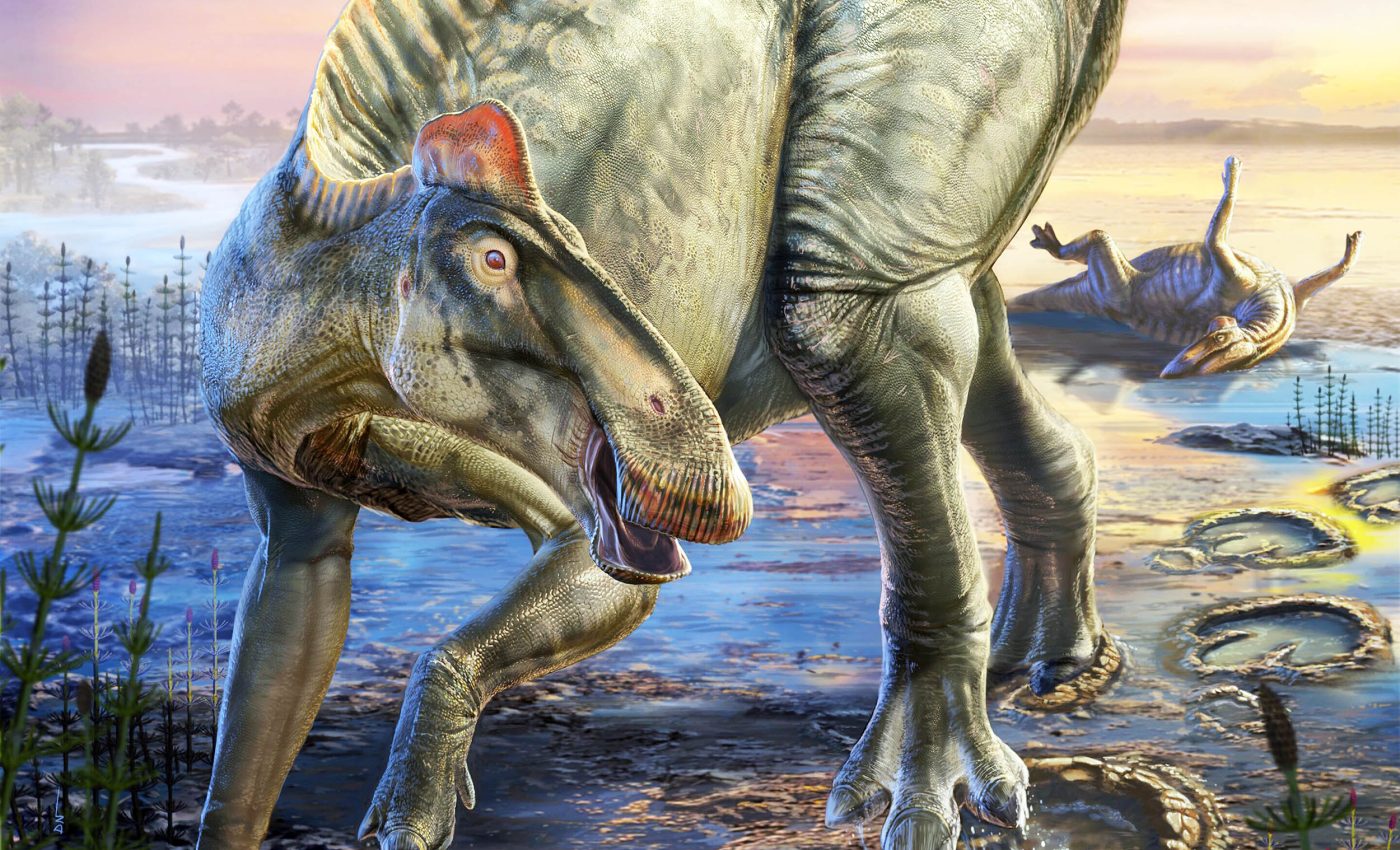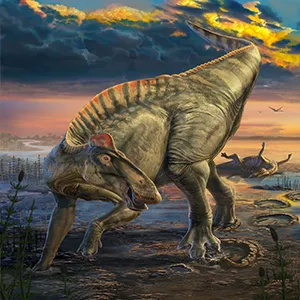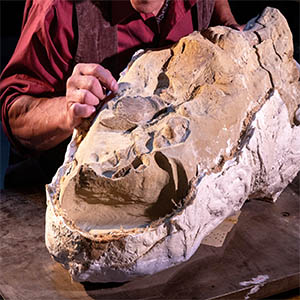
Dinosaur 'mummies' preserved so well that artists can recreate their appearance in great detail
More than 66 million years ago, a duck-billed dinosaur named Edmontosaurus annectens left behind something remarkable.
When scientists from the University of Chicago revisited its fossil remains in Wyoming, they uncovered not simple bones, but evidence of a delicate clay mask preserving the dinosaur’s skin, spikes, and hooves.
This discovery has redefined what scientists thought they knew about dinosaur “mummies.”
Understanding duck-billed dinosaurs
Duck-billed dinosaurs like Edmontosaurus annectens, also known as hadrosaurs, were some of the most common plant-eating dinosaurs that lived during the Late Cretaceous period, about 75 to 65 million years ago.
They earned their nickname because of their wide, flat snouts, which looked a lot like a duck’s bill. These bills helped them strip leaves and vegetation from trees and shrubs.
Inside their mouths, they had hundreds of tightly packed teeth that worked like a giant grinding machine – perfect for chewing tough plant material.
In fact, their teeth were so efficient that paleontologists consider hadrosaurs some of the most advanced herbivores of their time.
Clay preserved Edmontosaurus annectens
Unlike typical fossilization in oxygen-poor lagoons or lakebeds, Edmontosaurus annectens was buried in sandy river channels. After the animal’s death, its carcass dried in the sun before being swept up in a sudden flood.
As it decayed, microbes on its surface formed a thin biofilm that attracted clay minerals from the surrounding sediment.
This process created a submillimeter-thick layer – called a clay template – that captured every wrinkle and scale before the flesh itself disappeared.
“It’s the first time we’ve had a complete, fleshed-out view of a large dinosaur that we can really feel confident about,” said Professor Paul Sereno. “The badlands in Wyoming where the finds were made is a unique ‘mummy zone’ that has more surprises in store.”
Mummies with dinosaur details
Using advanced imaging, the researchers reconstructed the Edmontosaurus annectens‘ body in extraordinary detail.
A tall, fleshy crest stretched from its neck down to its back, fading into a neat row of interlocking spikes along the tail. The skin bore intricate polygonal scales, some barely a few millimeters wide.
These features suggest a flexible, textured hide rather than thick armor. The preservation of such fine surface detail supports the clay templating theory described in Science, which shows how biofilms can replicate soft anatomy even in oxygen-rich environments.
“The two specimens complemented each other beautifully,” Sereno explained. “For the first time, we could see the whole profile rather than scattered patches.”

Edmontosaurus annectens‘ hooves
Perhaps the most astonishing revelation was beneath the feet. CT scans revealed wedge-shaped hooves with flat bottoms encasing the dinosaur’s toes.
This makes Edmontosaurus the earliest known hooved reptile – and the first land vertebrate with different foot postures between front and back limbs.
The front limbs bore hooves that touched the ground, while the hind limbs combined hooves with fleshy heel pads, enabling both bipedal and quadrupedal movement.
“There are so many amazing ‘firsts’ preserved in these duck-billed mummies – the earliest hooves documented in a land vertebrate, the first confirmed hooved reptile, and the first hooved four-legged animal with different forelimb and hindlimb posture,” Sereno said.
Dinosaur mummy made by nature
The researchers outlined a four-stage process of natural mummification. First came desiccation under dry conditions, followed by a sudden flood that buried the carcass.
Next, the body cavities filled rapidly with sediment while a thin biofilm formed on its surface.
Finally, the clay minerals adhered to this biofilm, forming the mask that preserved the outer form before the tissues dissolved. Within weeks, the skeleton fossilized beneath its clay imprint.
This mechanism, known as terrestrial clay-templated preservation, differs from classic fossilization where mineralization replaces soft tissue. Instead, the clay acts as a natural mold, maintaining the outer structure long after the organic matter vanishes.
Over time, pressure and heat further solidified the sediment, protecting every contour of the animal’s body.
This rare sequence of events explains why such detailed fossils are almost never found in river settings, making this discovery one of paleontology’s most exceptional finds.

Fossil-rich mummy zone
The Wyoming “mummy zone,” less than ten kilometers wide, continues to yield fossils of Edmontosaurus, Triceratops, and even Tyrannosaurus rex, all remarkably well preserved.
Researchers attribute this to the region’s rapid geological subsidence and alternating drought-flood cycles near a Cretaceous coastline. These unique conditions created perfect opportunities for clay templating to occur repeatedly over time.
“This may be the single best paper I’ve released,” Sereno said. “From field to lab to 3D reconstructions along with a suite of useful terms defined, it’s a tour de force, and it tells a coherent story about how these remarkable fossils come to be and what we can learn from them.”
Through this new understanding, what began as a puzzle of preserved skin has become a breakthrough in how scientists read the ancient language of fossils.
This new understanding reveals not only the shapes of vanished creatures but also the fragile processes that preserved their final moments in clay.
The study is published in the journal Science.
—–
Like what you read? Subscribe to our newsletter for engaging articles, exclusive content, and the latest updates.
Check us out on EarthSnap, a free app brought to you by Eric Ralls and Earth.com.
—–













